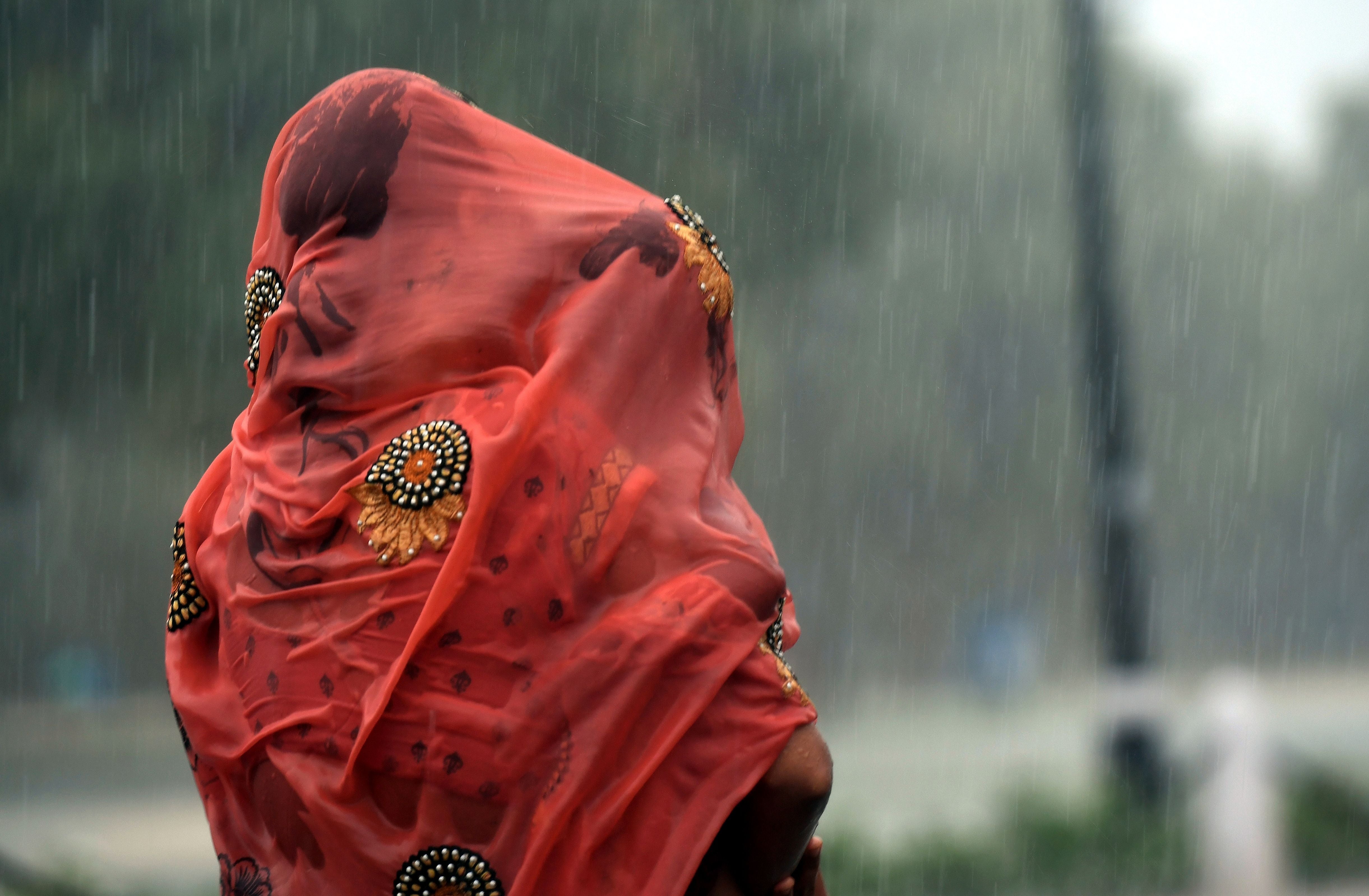India’s monsoon rains to get 5% heavier for every 1C of global warming, study finds
Seasonal rain to become more ‘chaotic’ — disrupting drinking water and food supplies for millions

Summer monsoon rainfall in India could increase by five per cent for every 1C increase in global temperatures, a new study finds — putting millions at greater risk of flooding and crop failure.
The seasonal downpours, which typically arrive in June and finish in September, are relied on by around a fifth of the world’s population for drinking water and farming, and account for four-fifths India’s annual rainfall.
The research finds that global warming could turn summer rains to become both more intense and more erratic from year to year by the end of the century.
Prof Anders Levermann, co-author of the study published in Earth System Dynamics and a climate scientist at the Potsdam Institute for Climate Impacts Research, told The Independent: “We found the monsoon will get more chaotic – it will get less predictable from year to year because the differences between years will become stronger.
“What we also found is that the increase in monsoon rainfall is stronger than what has been found in the previous set of climate models.”
For the study, the researchers made use of 31 of the latest generation of climate models, studying possible future changes to India’s summer monsoon under four future climate scenarios.
These scenarios ranged from a future where the world successfully meets the Paris Agreement goal of limiting global warming to well below 2C above pre-industrial levels to a scenario where very little is done to tackle greenhouse gas emissions.
The research finds that, in a scenario where global warming is limited to 2C, mean seasonal rainfall from the monsoon is likely to increase by nearly 10 per cent by the end of the century, when compared to levels from 1985 to 2015.
However, in the scenario where very little is done to tackle emissions, mean seasonal rainfall is expected to increase by nearly a quarter (24 per cent) by the end of the century.
The scientists also studied how “sensitive” the Indian summer monsoon was to increases in global temperatures.
These findings show that monsoon rains are likely to increase by around 5 per cent per 1C of global temperature rise, with a possible range of 1.7 to 13.4 per cent.
Previous research using an older set of climate models had put this figure at around 3 per cent, according to the study authors.
The projected increases come despite the fact that Indian monsoon rainfall generally decreased from the 1950s to at least the turn of the 21st century.
This decrease is likely linked to steep increases in air pollution occurring in India since the 1950s, Prof Levermann said.
“By looking at the observations alone, you would think that the monsoon would get weaker,” he said. “But the weakening in the past has been caused by pollution coming from industry.”
This air pollution has a local cooling impact and so has likely masked the effect of temperature rise on India’s monsoon rainfall in the past, he said.
However, as the climate crisis intensifies and more policies are put in place to clean up air pollution, it is likely that warming’s impact on the monsoon will become the dominant factor.
“The effect of CO2 will win over the effect of dirty air in the long run,” he said.
There are several reasons why the climate crisis could make the monsoon’s rainfall more intense. One of the simplest reasons is that warmer air is able to hold more moisture, Prof Levermann said.
The findings “support earlier research that tends to show increased Indian summer monsoon rainfall under enhanced greenhouse gas conditions”, said Dr Andrew Turner, a monsoon scientist from the University of Reading who was not involved in the study.
“While a stronger monsoon helps ensure an adequate supply for drinking water and agriculture, the tendency towards greater monsoon variability in the future warmer climate means there may be greater risks of flood, drought and crop failure,” he told The Independent.
“While we are more certain about what will happen in the long term – to the end of the 21st century – things are less certain over the next few decades.
“During this time, the trajectory of emissions of pollution, including from regions such as India and China, really matters in determining how monsoon rainfall will evolve.”
Subscribe to Independent Premium to bookmark this article
Want to bookmark your favourite articles and stories to read or reference later? Start your Independent Premium subscription today.

Join our commenting forum
Join thought-provoking conversations, follow other Independent readers and see their replies